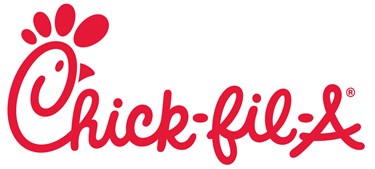Restaurant And Hospitality News – June 6, 2016

By Christine Kern, contributing writer

In news this week, Chick-fil-A launches new mobile app; Sally the Salad Robot is being developed to reduce infections rates due to food contamination; and audience segmentation can help improve ROI for hoteliers.
Chick-fil-A Launches New Mobile Ordering and Pay-ahead App To Save Customers Time
Chick-fil-A is courting Millennial parents with a new mobile app that allows users to order and pay ahead, customize meal, skip the line, and earn free food, according to the Nation’s Restaurant News. Once guests order via its new app, Chick-fil-A One, food is prepared once customers officially “check in” at the pickup location reducing the waiting time to pick up food. Fox News reported that the company says that the app is geared toward millennial parents-- 82 percent of whom "would do almost anything to avoid long lines at fast food restaurants.”
The card also doubles as a rewards program, allowing frequent customers to earn points towards free food. And the chain is celebrating the mobile app launch by giving away one free sandwich per user to customers who download it through June 11. Once a user downloads the app, they receive a QR redemption code for a free original, spicy, or grilled chicken sandwich.
“We know time is valuable, and we’re excited to offer this new convenience that will empower guests to order what they want, when they want it and exactly how they want it, all from their mobile device,” said Michael Lage, senior manager of digital experience for Chick-fil-A.
“This app was developed based on customer feedback, so it was specifically designed to give our guests an even more convenient and personalized experience in our restaurant.”
Automation Comes To Salad-Making: Introducing Sally the Salad Robot
Startup Casabots is working on the prototype for a new robot that restaurants, hotel chains, and cafeterias can use to prepare salads for customers. Dubbed Sally the Salad Robot, she could be available for distribution by the end of the year, according to The Nation’s Restaurant News. The prototype was on display at the recent NRA Show in Chicago. The Salad Robot occupies a 28-inch square footprint, and stands 35 inches high, and the idea is to reduce the risk of human contamination.
According to the Centers for Disease Control 58 percent of domestic foodborne illnesses are norovirus outbreaks which cause approximately 60,000 hospitalizations and roughly 700 deaths every year. The majority of norovirus cases occur from people handling raw food in restaurants, and the main culprit being salad bars. Sally the Salad Robot is designed to help reduce infection rates.
“Do you know 20 percent to 50 percent of people don't always wash their hands after using a restroom?” asked Deepak Sekar, founder and CEO of Casabots. "Imagine these people touching a salad bar. It was clear the world needed a hygienic, low-space, low-maintenance alternative to today's salad bars.”
Ingredients are stored in separate silos inside the machine, and Sally can precisely measure nutritional values (protein, fat, sodium, and so forth) as well as amounts within 0.02 pounds of accuracy. The unit can be linked to a kiosk for a kitchen food preparation staff, or can be configured for consumer-facing use with the built-in touchscreen or using their smartphones to place orders.
Converting Data Into Action by Segmenting Your Audience
This recent article from ehotelier.com discusses how data is transforming the foundation of hospitality marketing in order to turn data into action. The key is to segment your audience. As the article asserts, “With personalized content, hoteliers can now engage and nurture their guests like never before. As a result, you have a new way to increase satisfaction and cultivate loyalty to generate profitable revenue growth. In that respect, marketing departments are realizing that using their own data to compile audiences has become one of their biggest assets.”
Audience segmentation allows for personalization and the creation of actionable data. To segment your audience, take the following steps: Centralize your data to build a robust guest profile; implement audience segmentation by knowing your audiences; Keep exploring your audience segments; and then Mine your big data, and segment with clustering techniques.
Audience segmentation should be improving ROI, email open rates and click-through rates, and likes after implementing relevant audience segmentation when they are properly implemented.
